Traditional Metal Braces – Dallas, TX
Reliable, Effective Way to Straighten Teeth
Despite new treatments and technology, traditional orthodontic treatment with metal braces continues to be a popular method of correcting misaligned teeth. Why? To put it simply, braces work! Unlike Invisalign, traditional metal braces from our Lakewood orthodontist can be used to treat even severe cases for patients of all ages. At Lakewood Orthodontics, we are proud to offer both newer and more traditional treatments. That way, we’re sure to find a method that meets everyone’s unique needs.

Why Choose Lakewood Orthodontics for Traditional Metal Braces?
- Dependable Orthodontic Treatment
- Insurance Accepted
- Children, Teens, and Adults Welcome
How Do Traditional Braces Work?

You know that traditional braces can correct a wide range of orthodontic issues – from minor spacing to severe overcrowding – but how exactly do they work? In short, a bracket is carefully adhered to each tooth, and they are connected by an archwire and elastics. The resulting tension places just enough pressure on your teeth to gently and gradually guide them into their ideal positions!
Who Can Braces Help?
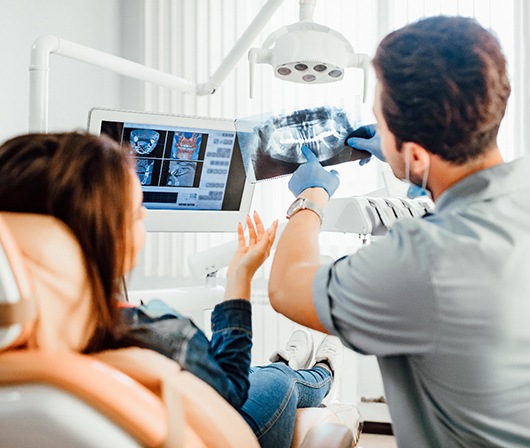
There are good reasons why traditional metal braces continue to be popular even though a range of alternative treatments are available. One of those reasons is simply that braces can address both minor and severe cases of misalignment — and everything in between. In fact, they are suitable for almost all patients! What are some specific examples of issues that they are commonly used to correct? Continue reading below to discover some important information.
Crowded Teeth
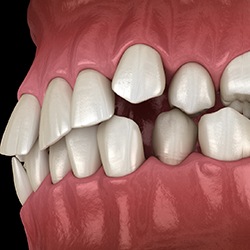
Overlapping teeth can easily harbor food particles, plaque, and other debris that are difficult to remove while you are brushing and flossing. Plus, the uneven bite can result in chronic teeth grinding and, subsequently, premature wear. The good news is that braces can incrementally move your teeth, allowing each one to have the space it needs to function optimally and be at a lower risk of decay and other problems.
Gaps Between Teeth
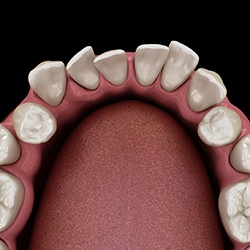
Spaced-out teeth come with aesthetic and functional drawbacks. Not only might they make you feel self-conscious about your appearance, but your gums may also be vulnerable to irritation and harm. Fortunately, braces are often able to seamlessly close such gaps, improve a misaligned bite, and lead to a big confidence boost!
Overbite
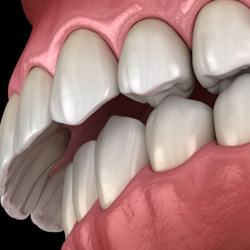
Your top teeth should rest slightly in front of your bottom teeth. However, if they rest too far forward, you have what is known as an overbite. This issue can interfere with your speech, cause jaw discomfort, give the appearance of a weak chin, and lead to other problems. Braces, along with special accessories, are often able to correct overbites.
Underbite
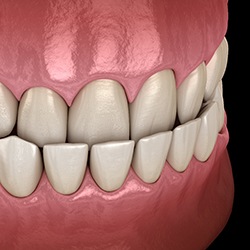
An underbite is what occurs if your bottom teeth rest in front of your top teeth. This can affect your facial profile, lead to chewing and biting problems, and contribute to inflammation and pain in your jaw joints. The good news is that braces are frequently able to correct cases of overbite.
Crossbite
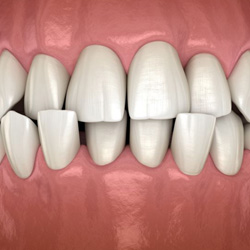
If only some of your bottom teeth rest in front of your top teeth, you have an orthodontic issue known as a crossbite. This can make it difficult for you to chew, cause speech problems, and pose a risk of damage to your teeth. Braces may be able to shift your smile in a way that allows all your teeth to work harmoniously together.
Open Bite
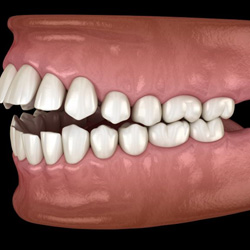
If there is a vertical gap between your top and bottom front teeth, even when your back teeth are touching, you have an open bite. Often caused by thumb sucking or other habits during childhood, an open bite can interfere with both oral function and aesthetics. Braces are often able to shift the teeth in a way that closes an open bite.
Caring for Your Braces
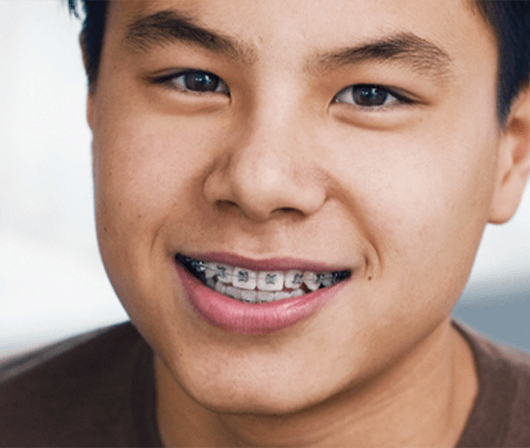
Like your teeth and gums, your braces need to be cared for. One of the best things to do is set yourself up for success by purchasing all of the right supplies, like an interproximal toothbrush and pre-threaded floss. It’s also a good idea to avoid habits that have the potential to break a bracket or wire, like chewing on ice or biting your nails.
When undergoing orthodontic treatment, many patients worry about how their diet will have to change as a result. Thankfully, there’s still a wide variety of foods you can enjoy worry-free, including most dairy products, bread items, grains, meats, seafood, vegetables, fruits, and sweet treats. We do strongly recommend, though, that you avoid particularly chewy foods, crunchy foods, sticky foods, hard foods, or foods that require some force to bite into, such as apples or corn on the cob, which can be cut into smaller pieces before eating.
Last but not least, make sure to wear a mouthguard if you play any sports so that your braces and teeth can be protected against potential damage. If an injury does occur, please don’t hesitate to contact Dr. Simon right away here at Lakewood Orthodontics.
Benefits of Traditional Braces
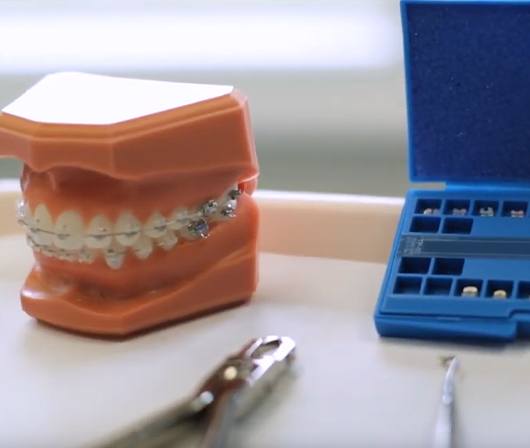
Although traditional braces are more noticeable than other treatments such as Invisalign, they have several benefits that you cannot find elsewhere. For example, they are one of the most reliable teeth-straightening methods. They are also precise and often more affordable than other methods. Would you like to learn more about the many advantages of traditional braces? Continue reading below.
Reliable Results

Since the mid-1900s, metal braces have been a widely accepted treatment for correcting many types of dental misalignment. Over the decades, they have become even better at what they do. They can be used for virtually all orthodontic problems, including complex and severe cases, and they consistently provide desirable results.
Durability
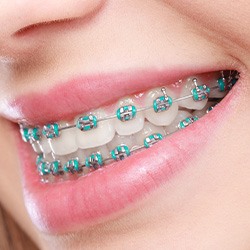
Metal braces are quite strong. Not only do they exert enough pressure on the teeth to move them efficiently, but they are also built to stand up to all the challenges of normal eating and drinking habits. Although you may need to avoid certain foods with braces, you can expect them to stay strong and effective throughout your entire treatment period. Also, metal braces are less prone to breakage than their counterparts that are made of more fragile materials, such as ceramic.
Precision
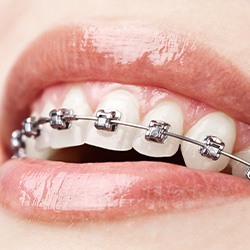
Traditional braces give our team a great deal of control over your tooth movements. As long as you comply with our instructions — for example, you may need to wear rubber bands — your teeth should move in a predictable manner, and you should end up with a well-aligned smile and comfortable bite.
Suitable for All Ages

Clear aligner treatments, such as Invisalign, are typically recommended only for adults and teens. That is because they require a degree of self-discipline in order to be successful. Patients have to remember to wear them for 20 – 22 hours a day, which is not easy for everyone! Braces, on the other hand, can be used for even young children. They are attached to the teeth, so there is no need to worry that the patient will forget to wear them. Of course, braces are also suitable for teens, adults, and even seniors.
Fast Tooth Movements
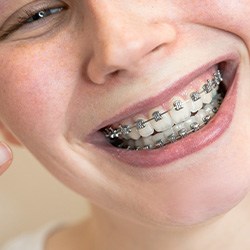
You might have heard it said that Invisalign is faster than traditional braces. However, it would be more accurate to say that the average treatment timeline with Invisalign is faster. The truth is, braces move teeth in a very efficient manner. They just have a longer average timeline because they are used for more complex cases, which, naturally, can take longer to correct. You can expect to make steady progress toward your goal of having a confident and healthy smile!
Understanding the Cost of Traditional Braces
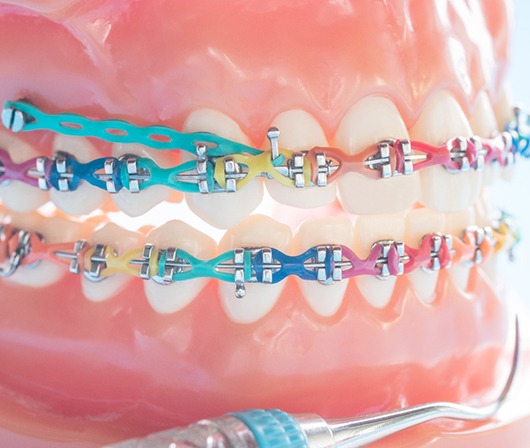
Traditional braces are one of the most common orthodontic treatments due to their proven effectiveness and budget-friendly price tag. With them, you’ll be able to not only straighten your smile to improve its appearance, but also boost your oral health, reducing your risk of needing treatments for common problems associated with misalignment, like cavities and gum disease. Our team values transparency and will provide you with a detailed cost estimate at your consultation, and if you have any questions or concerns, never hesitate to let us know!
Factors That Affect the Cost of Traditional Braces

With braces, there’s no singular price tag associated with treatment because the cost will be dependent on a variety of factors that will be determined once Dr. Simon has examined your mouth. Your personalized plan will be based on the following:
- The complexity of the orthodontic problems you face.
- Whether you need to correct one or both arches.
- The length of your orthodontic treatment.
- Any additional necessary accessories, like elastic bands, headgear, etc.
- How many check-in visits you’ll need.
- Whether you stay on-track with your treatment timeline by following your orthodontist’s recommendations and guidance.
Professional Braces vs. “DIY” Braces: Which Costs More?

While the cost of orthodontic treatment is by no means “cheap,” it provides life-changing benefits and is clinically proven to do what it promises. However, today, more people are turning to alternative DIY methods of treatment or mail-in aligners. While these may be less expensive at first, they often lead to worsening misalignment and a higher risk of oral health issues, resulting in hefty dental bills to fix. The American Dental Association also warns against these treatments due to the dangers they present.
Does Dental Insurance Cover Braces?

While dental insurance plans can vary greatly, many will cover the cost of traditional braces for those under 18 years old, or in some cases, adults. To find out more about your coverage, you’ll need to contact your provider directly.
At Lakewood Orthodontics, we’re happy to file insurance claims on your behalf to help maximize your benefits and spare you any extra hassle or stress. If you have questions about your plan, our team of experienced professionals may also be able to help answer them!
Options for Making Braces More Affordable

In addition to accepting dental insurance, we also offer financing through Lending Club. This trusted, third-party financer allows you to split the cost of your treatment into small monthly payments with little-to-no interest. If you don’t qualify or would prefer financing your treatment through us, we also offer that! Just ask our team for more details at your next appointment.
Traditional Braces FAQs
Do you believe that you or a family member could benefit from traditional braces? Your orthodontist in Lakewood is here to help! However, before you contact us to schedule your consultation, you may want to learn more about treatment and what you can expect from it. That is why we have compiled the following brief list of frequently asked questions, along with their answers. If you don’t see the information you were hoping for, please give us a call so we can personally assist you.
Can Braces Damage My Teeth?
Your braces will not directly harm your teeth. However, you should always bear in mind the need for diligent oral hygiene. If you do not thoroughly brush and floss, food debris may get stuck around your braces and increase your risk of developing cavities. If you have any questions about how to properly clean your teeth while you are going through your treatment, our team will be happy to provide personalized coaching.
How Long Will I Need to Wear Braces?
Total treatment time varies from patient to patient. To a large extent, how long you will have to wear braces depends on the initial alignment of your teeth and bite. Dr. Simon will be able to give you an estimate of how long your treatment will take after she has an opportunity to examine your smile. On average, braces take 18 – 24 months to finish their work.
Does Dental Insurance Cover Braces?
Some dental insurance policies cover braces, while others do not. We’re happy to help check the specifics of your policy to see how it applies. Commonly, dental plans that cover braces pay for about 50 percent of their cost, up to the amount of the plan’s lifetime maximum. For many patients, their insurance reduces their out of pocket cost by several hundred dollars.
How Often Will I Need to Visit My Orthodontist’s Office?
Most patients need to visit us every seven weeks or so. At these appointments, Dr. Simon will check on your treatment’s progress and tighten your braces so they can continue to shift your teeth in the right direction. In most cases, these visits are brief and take less than twenty minutes.
What Should I Do if Something Goes Wrong with My Braces?
If a wire on your braces begins to protrude or you experience another problem, give us a call right away. We will do our best to make time in our schedule to attend to you as soon as possible. In the meantime, you can try to bend a broken wire back against your teeth and place some orthodontic wax to reduce any discomfort it is causing.
Children's Orthodontic Care Teen Orthodontic Care Adult Orthodontic Care Ceramic Braces Self-Ligating Braces Invisalign Clear Aligners Two-Phase Treatment Dentofacial Orthopedics Orthodontic Airway Management Surgical Orthodontics Orthodontic Emergencies Oral Appliances View Our Services

